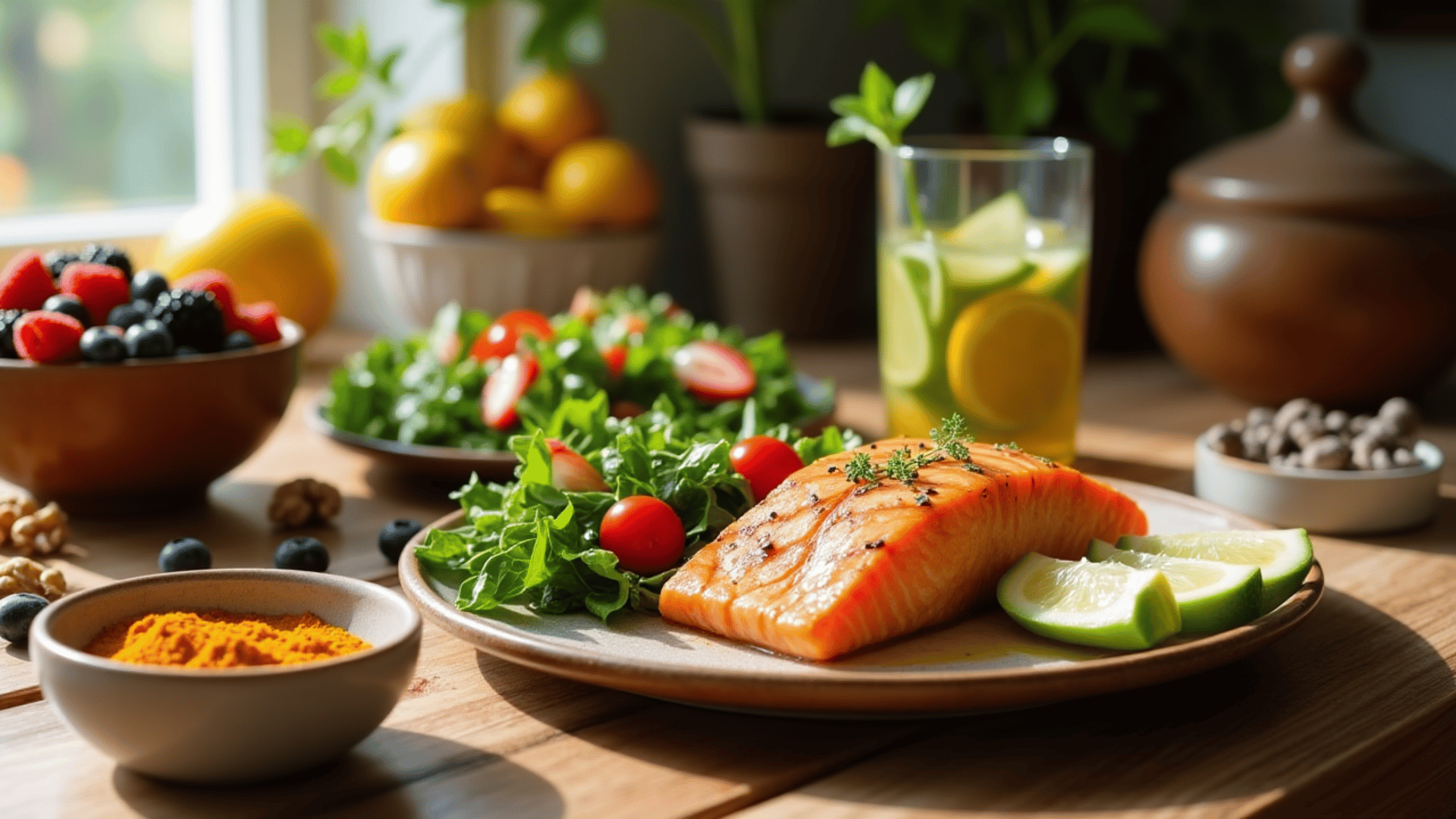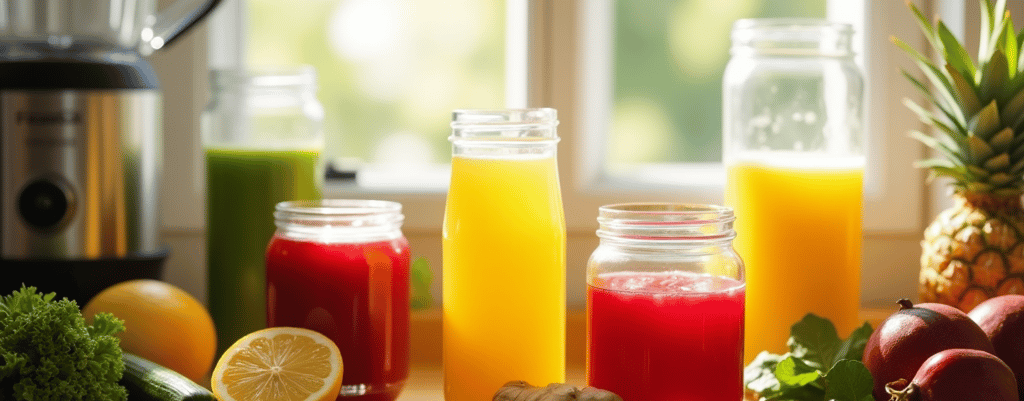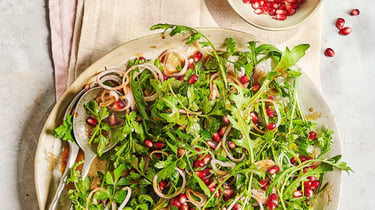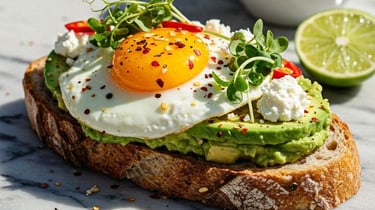
What Is the Anti-Inflammatory Diet?
Struggling with inflammation? Learn how the anti-inflammatory diet helps vegans reduce pain and boost energy. Discover all 10 reasons today!
DETOX TIPS


Your Path to a Less Inflamed, Healthier You
Ever feel bloated, tired all the time, or get random aches and skin breakouts — even though you’re trying to eat “healthy”? It might be your body quietly fighting inflammation without you even realizing it.
That’s where the anti-inflammatory diet comes in. This isn’t some trendy fad or quick fix. It’s a science-backed way of eating that helps calm the sneaky, chronic inflammation that can mess with your body and mood over time.
In this guide, I’ll help you spot inflammation, understand how this lifestyle works, and show you easy, tasty ways to eat your way to feeling amazing — one meal at a time.


What Is the Anti-Inflammatory Diet? Your Easy Guide to Feeling Better Every Day
Understanding Inflammation: Your Body’s Silent Battle
What’s Inflammation Anyway?
Inflammation isn’t always the bad guy. When you scrape your knee or catch a cold, your body uses acute inflammation to heal and fight off germs — that’s good and normal.
But when inflammation sticks around too long — called chronic inflammation — it’s like a low-grade fire inside you that won’t go out. This can slowly damage your tissues and lead to health problems.
Why Should You Care?
Chronic inflammation is linked to some serious stuff like:
Heart disease
Type 2 diabetes
Alzheimer’s
Arthritis
Obesity
Certain cancers
Doctors even measure inflammation with tests like C-reactive protein (CRP) to see how your body’s doing behind the scenes.
Understanding Inflammation: Your Body’s Silent Battle
What’s Inflammation Anyway?
Inflammation isn’t always the bad guy. When you scrape your knee or catch a cold, your body uses acute inflammation to heal and fight off germs — that’s good and normal.
But when inflammation sticks around too long — called chronic inflammation — it’s like a low-grade fire inside you that won’t go out. This can slowly damage your tissues and lead to health problems.
Why Should You Care?
Chronic inflammation is linked to some serious stuff like:
Heart disease
Type 2 diabetes
Alzheimer’s
Arthritis
Obesity
Certain cancers
Doctors even measure inflammation with tests like C-reactive protein (CRP) to see how your body’s doing behind the scenes.
Popular Anti-Inflammatory Diet Styles
Mediterranean Diet: Loads of veggies, olive oil, fish, nuts, and a splash of red wine. It’s great for your heart and joints.
DASH Diet: Focuses on lowering blood pressure with whole grains, fruits, veggies, and less salt.
MIND Diet: A combo of Mediterranean and DASH that’s all about keeping your brain sharp and protected.
Your Anti-Inflammatory Grocery List
Eat These Often:
Fruits: Berries, cherries, oranges, apples, mango, pineapple
Veggies: Spinach, kale, broccoli, Brussels sprouts, carrots, beets
Whole Grains: Oats, quinoa, brown rice, barley
Legumes: Lentils, chickpeas, black beans
Healthy Fats: Olive oil, avocados, walnuts, chia seeds
Fatty Fish: Salmon, mackerel, tuna (aim for 2–3 times a week)
Herbs & Spices: Turmeric, ginger, garlic, cinnamon, oregano
Drinks: Water (try infusing with fruit), green tea, moderate coffee, herbal teas
Treat (optional): Dark chocolate (at least 70% cocoa)
Limit or Skip:
Sugary drinks and sweets
White bread, pastries, white pasta
Processed meats like bacon and hot dogs
Fried foods and trans fats
Too much salt (watch those canned soups and instant meals)
About Nightshades: Tomatoes, peppers, and eggplants get mixed reviews. Unless you notice they bother you, they’re usually fine — and tomatoes pack a punch of anti-inflammatory lycopene!
More Than Just Food: Other Ways to Beat Inflammation
Move your body: Aim for about 150 minutes a week—walking, yoga, lifting weights, whatever you enjoy.
Sleep well: 7–9 hours of solid shut-eye helps calm inflammation.
Manage stress: Try meditation, journaling, or nature walks to keep cortisol (stress hormone) in check.
Avoid smoking: It’s a big inflammation trigger and health hazard.
Write a short text about your service
Write a short text about your service
Write a short text about your service






Easy Tips to Get Started
Don’t overwhelm yourself—swap one soda for green tea first.
Eat the rainbow — the more colors, the better.
Prep soups or salads ahead for quick meals during busy days.
Flavor your water with lemon or mint for extra zest.
Experiment with spices like turmeric and ginger to boost flavor and health.
Need help? A registered dietitian can personalize your plan.
Sample Day on an Anti-Inflammatory Diet
Breakfast: Really Green Smoothie (spinach, banana, chia, avocado, almond milk)
Snack: Pear + handful of almonds
Lunch: Tomato, cucumber & arugula salad with hummus and whole grain crackers
Snack: Walnuts + herbal tea
Dinner: Garlic-roasted salmon with baby potatoes & steamed asparagus
Pro tip: Make a big batch of lentil soup or roast veggies for easy lunches all week!
What to Expect & Common Challenges
It might feel weird at first reading labels and changing habits — totally normal!
Give it 2–3 weeks for first results, but full benefits can take up to 3 months.
Remember, it’s not a magic cure but a powerful support to your health.
You might lose some weight naturally as you cut processed foods.
Everyone’s body is different—some foods like eggs might affect you uniquely.
Wrapping It Up: Your Journey to Less Inflammation Starts Now
This isn’t a passing trend—it’s about feeding your body well for the long haul. By choosing nutrient-packed whole foods and supporting your lifestyle with sleep, movement, and stress relief, you’re setting yourself up to feel better, fight chronic inflammation, and live your healthiest life.
Every small change counts, so why not start today? Swap one meal for something anti-inflammatory and see how you feel!
Quick FAQs
Q: Can I mix and match meals?
A: Totally! Just try to keep calories and nutrients balanced.
Q: Is it okay to eat the same breakfast daily?
A: Yep, consistency can help you stay on track.
Q: Is 1,200 calories per day too low?
A: Usually, yes — most adults need more to stay energized and healthy.
Q: How fast can I reduce inflammation?
A: Eating anti-inflammatory foods, sleeping well, and managing stress help quickly—sometimes within weeks.
Q: Are eggs inflammatory?
A: It depends. Some people react differently, especially if they have certain health conditions.
Q: What are cheap anti-inflammatory foods?
A: Oats, spinach, bananas, apples, lentils, and green tea are wallet-friendly and effective.
Q: What diseases can this diet help with?
A: Rheumatoid arthritis, heart disease, diabetes, Alzheimer’s, and more.
Q: Will I lose weight?
A: Maybe—not the main goal, but cutting processed foods helps.
Q: Can I have cheat days?
A: Occasional treats are fine, but aim for mostly consistent healthy eating.
Ready to start feeling better from the inside out? The anti-inflammatory diet is your easy, tasty, and sustainable path to a healthier you. One meal at a time — you’ve got this! 🌿
Vegan Recipes You’ll Crave
Explore a variety of simple, satisfying vegan meals made with everyday ingredients. Whether you're fully plant-based or just reducing animal products, these recipes help you eat well with ease
Vegan Recipes You’ll Crave
Explore a variety of simple, satisfying vegan meals made with everyday ingredients. Whether you're fully plant-based or just reducing animal products, these recipes help you eat well with ease
